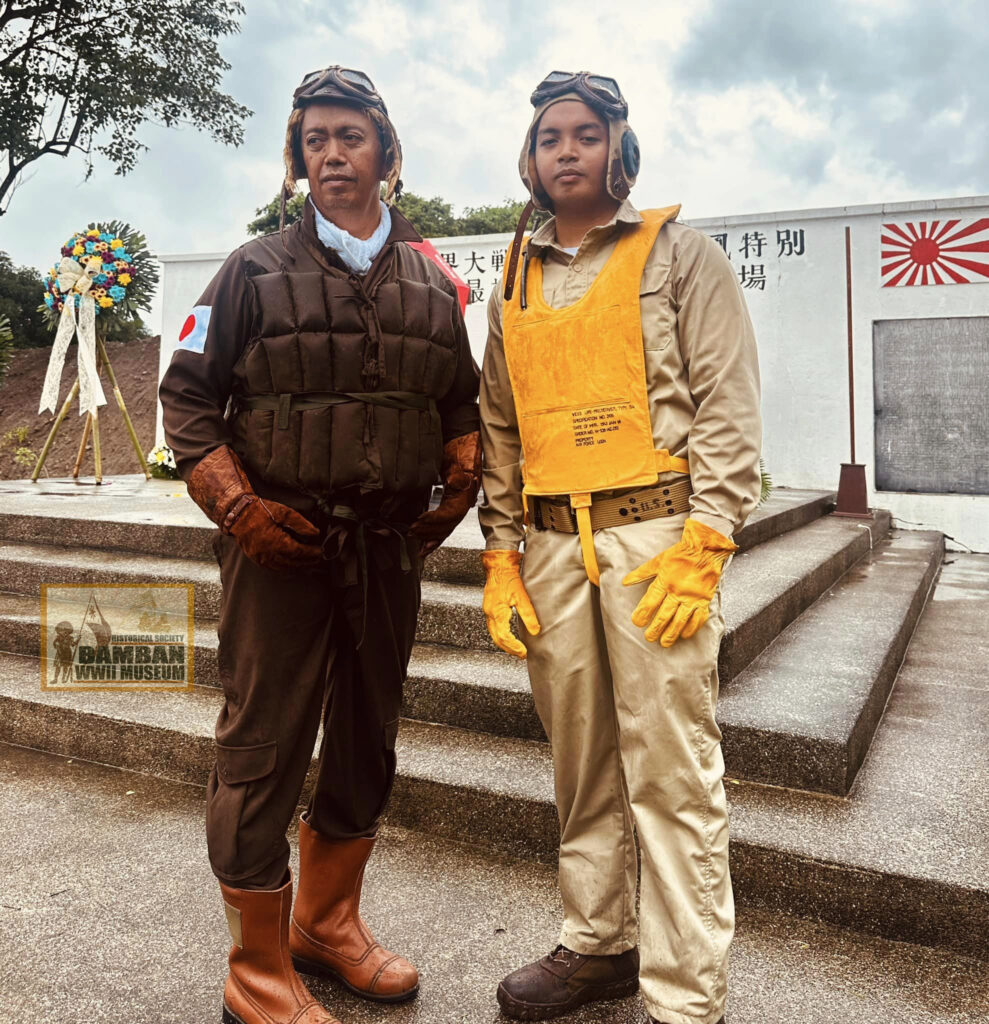
In the history of WWII, an event that occurred 80 years ago that changed the view on air war; the introduction of the Japanese Special Attack, or the Shimpu Tokubetsu Kogekitai (Tokko) that was organized in nearby neighboring town of Mabalacat, Pampanga in Luzon, Philippines.
WWII HISTORY: THE JAPANESE SPECIAL ATTACK
大東亜戦争の歴史: 日本の特別攻撃部隊。
Young Japanese naval pilots mostly from the 10th Yokaren Preparatory Naval Flight Training Course from the Air Group 201 based at Mabalacat Airfields were the first to be selected as members of the Japanese 1st Special Attack Corps midnight October on October 19, 1944. Most of the pilots from both the Japanese Navy and Army that were organized for Special Attack were killed in the Kamikaze operations in the Philippines, the successful one was made on October 25, 1944.
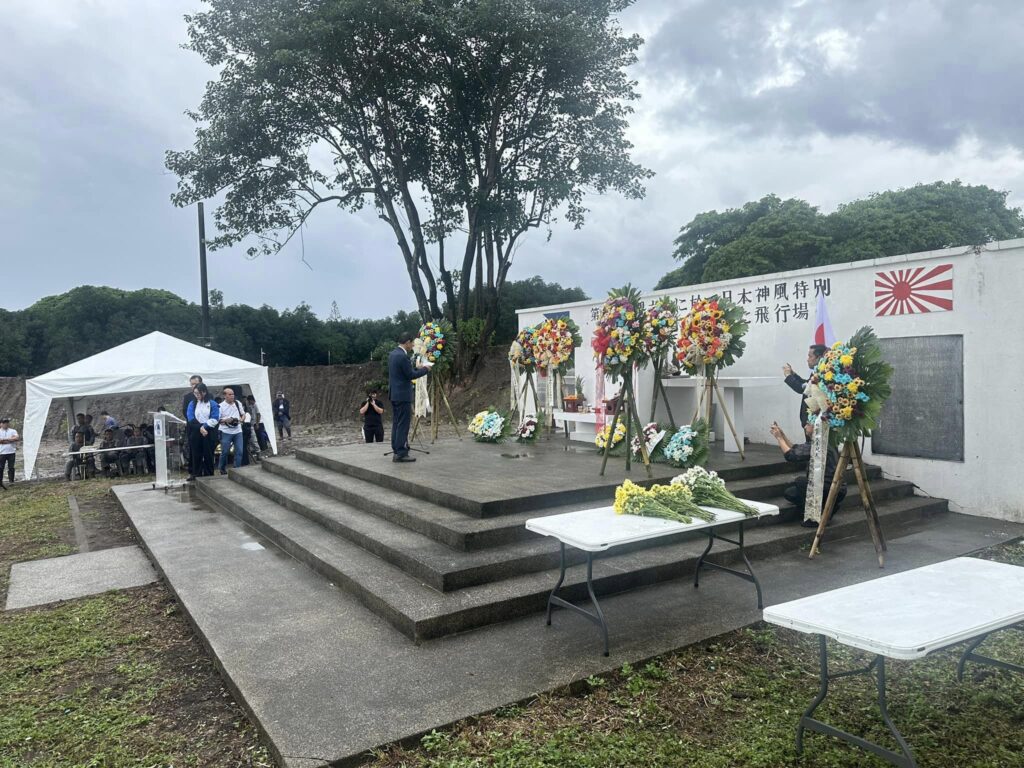
WORLD PEACE CEREMONY
世界平和のための式典。
Post-war, in the early 1970s, then survivors of the Air Group 201 who were members of the Special Attack made sentimental journeys to Mabalacat, Clark and Bamban that were former bases and headquarters of the Imperial Japanese Navy, bringing with them members of their family and bereaved families that extended not only for the Kamikaze pilots but for all Japanese war dead. Since then, the annual pilgrimage to Mabalacat and former bases mentioned continued, with interruption during Mt. Pinatubo eruption in the 1990s.
The theme of the annual pilgrimage that became ceremony was for prayers for all war dead and for world peace.
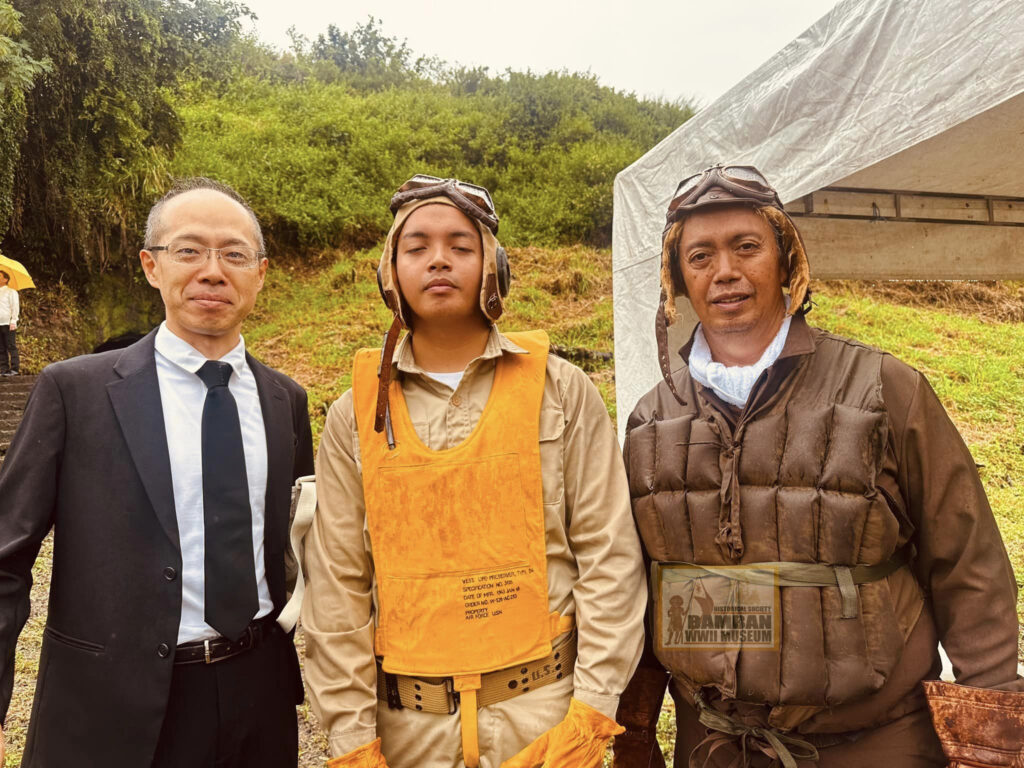

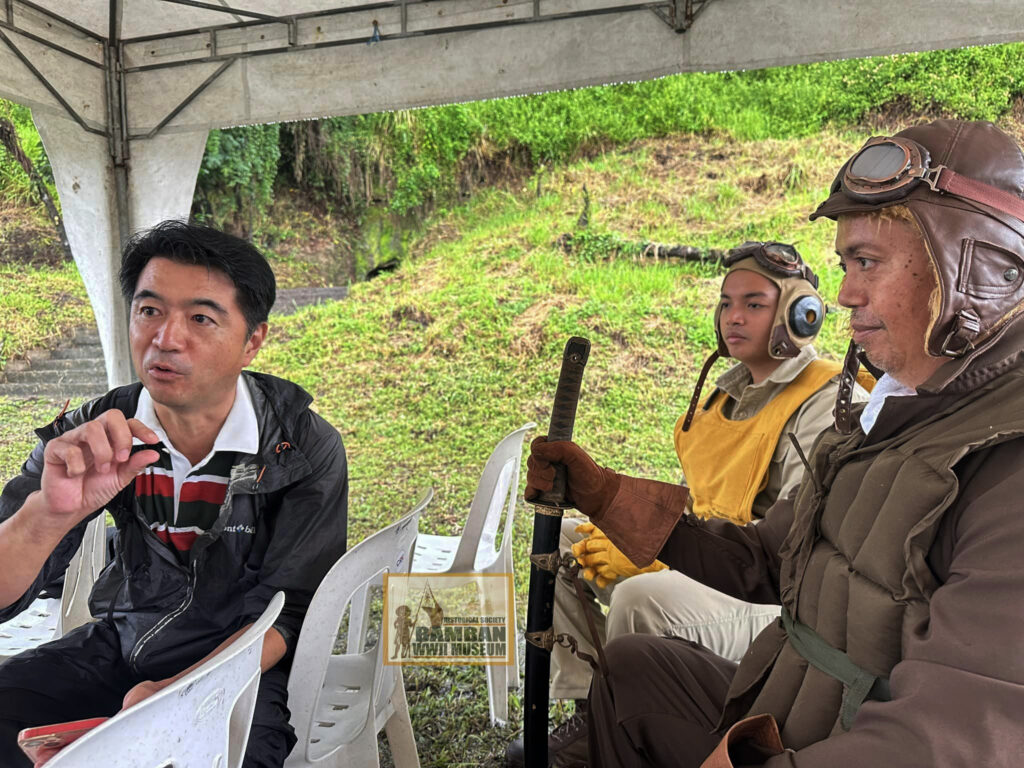
80th ANNIVERSARY – 創立80周年記念。
Last October 25, the event was made to remember the 80th anniversary of the Japanese Special Attack at the former Japanese navy airfield of the Mabalacat West. Attendees were Japanese, delegates from the Japan Self Defense Forces, Tokkotai Association, several Japanese organizations and the Japan Embassy in Manila. Also were delegates from both Clark International Airport Corporation and Clark Development Corporation.
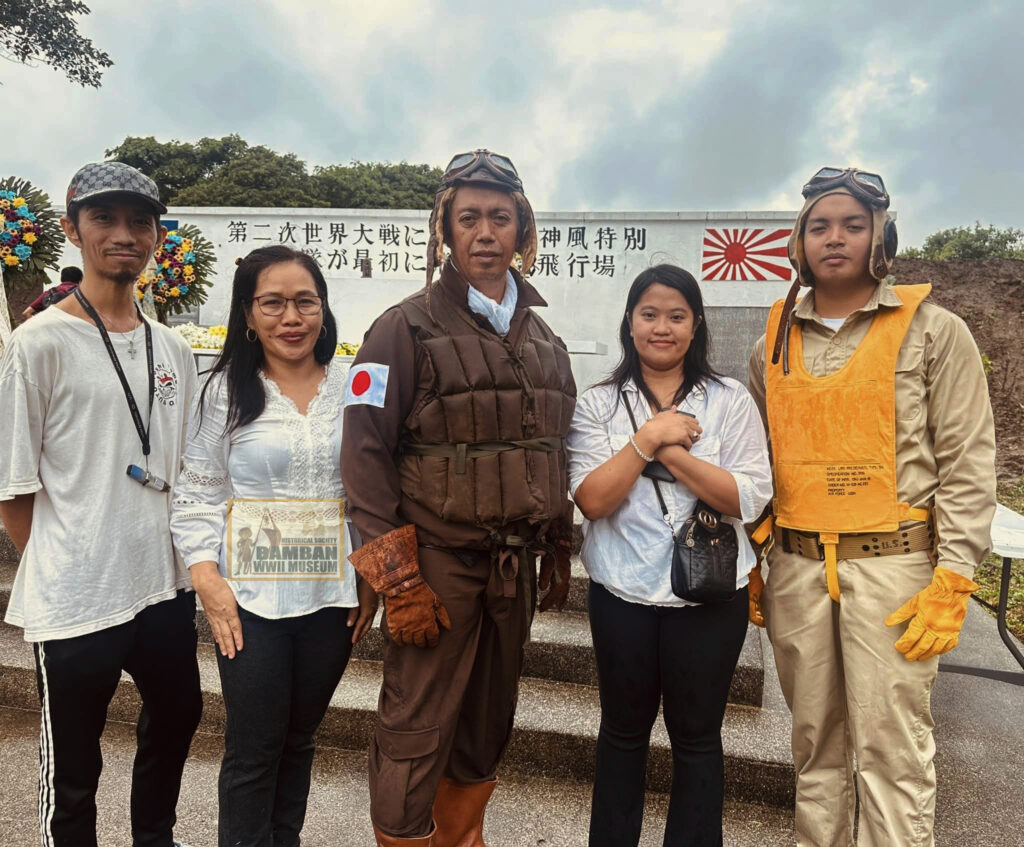
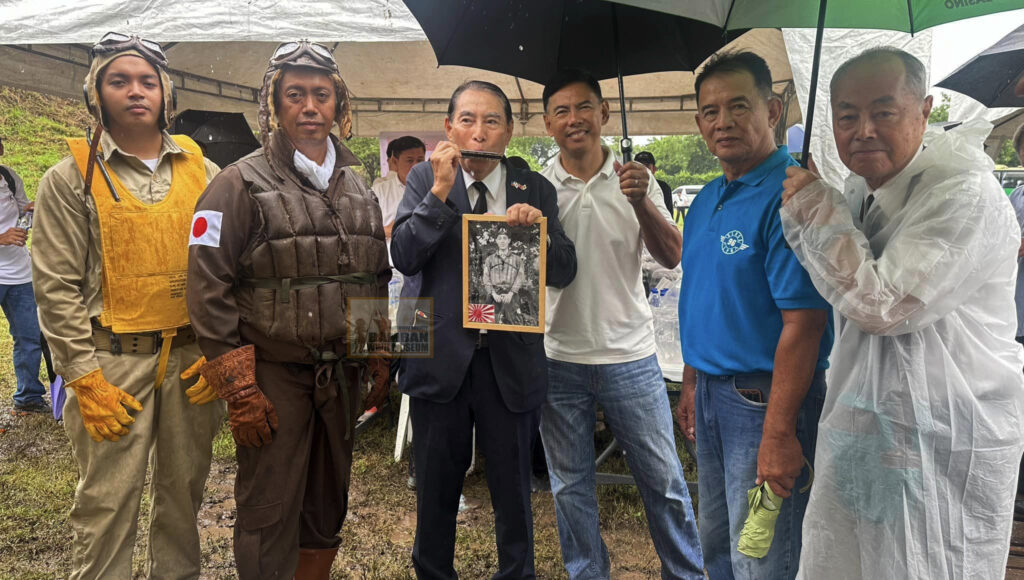
BACK TO THE FUTURE! WWII HISTORY – AMERICAN AND JAPANESE NAVAL PILOTS IMPRESSION
大東亜戦争におけるアメリカと日本の海軍パイロットの印象。
We at the Bamban WWII Museum, with official invitation from the organizer; Clark International Airport Corporation CIAC, decided to put on our WWII Impressions on American and Japanese naval pilots that had taken part in the Air War over Clark, including the Japanese Special Attack.
Before an event, had some coffee at our favorite place with my son Little John. Two opposing naval aviators over the skies of Clark Field in late 1944, found themselves enjoying coffee together at MacDonald’s in 2024, on the grounds of Clark (now Clark Freeport Zone).
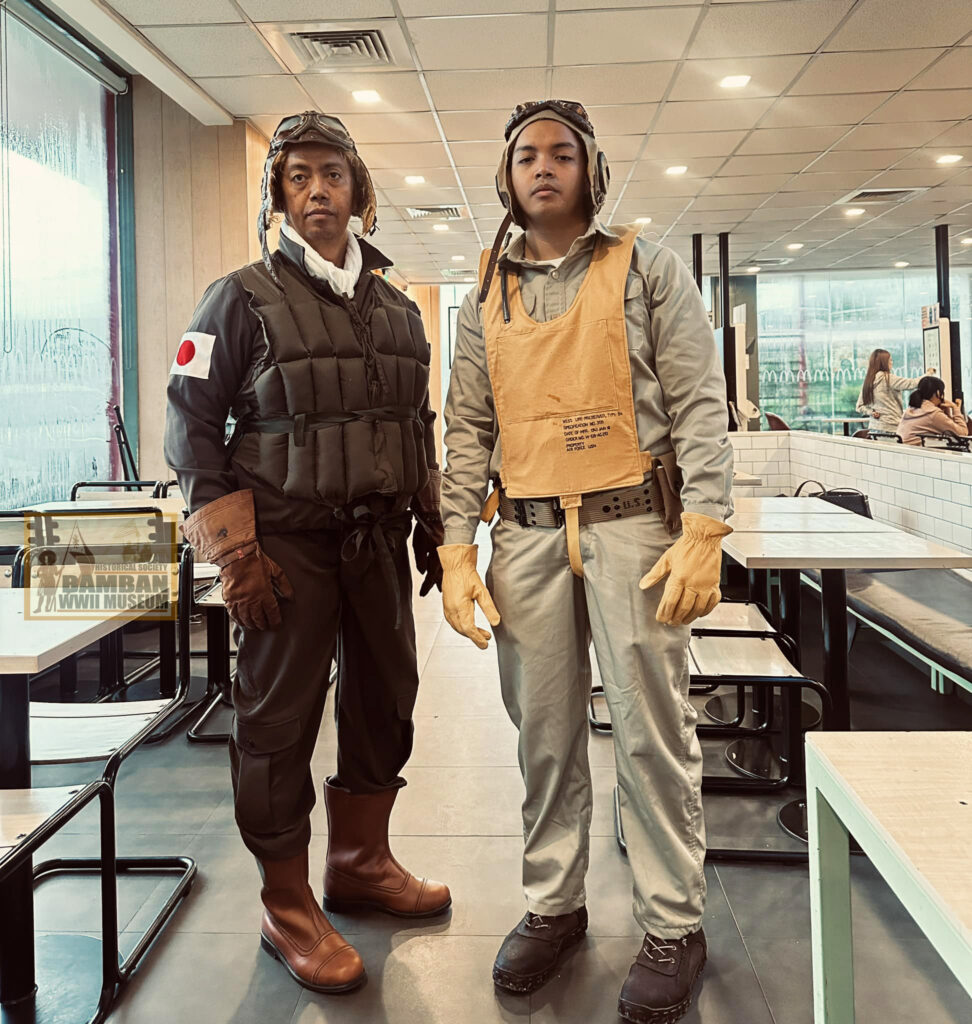
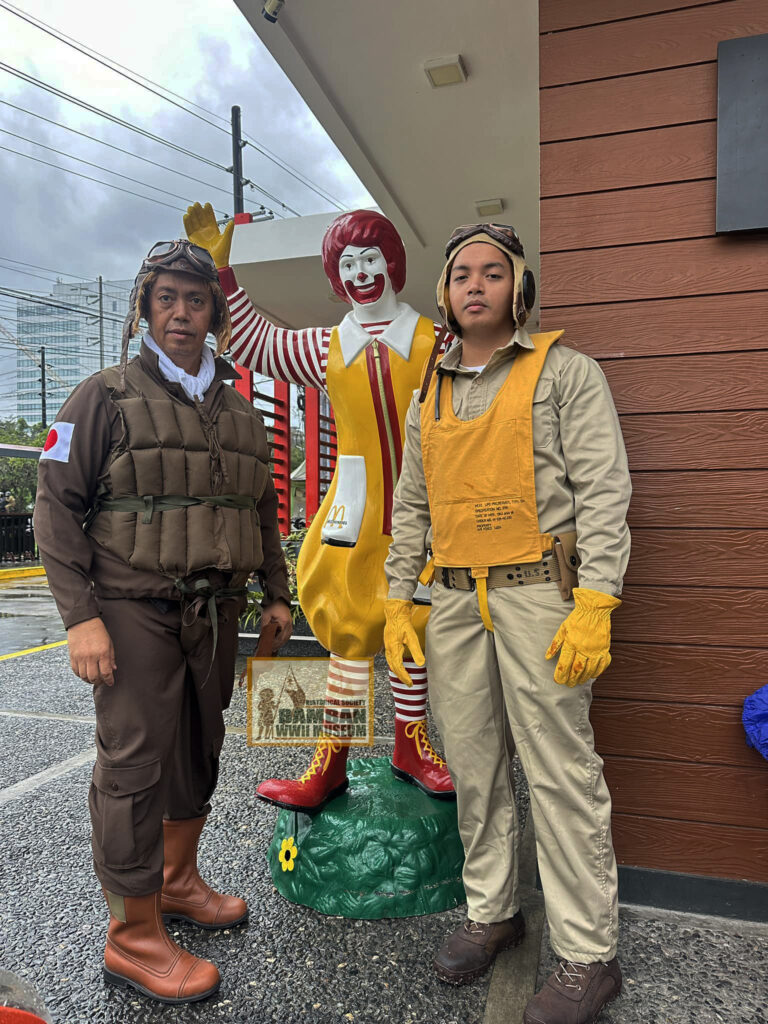
LT. ALEX VRACIU (VF-20) AND WARRANT OFFICER KI-ICHI NAGANO (Air Group 203)
アメリカ海軍パイロットのアレクサンダー・ヴラシウ中尉と日本海軍パイロットの永野基一准尉。
The event was started at past 0700 hours at the edge of the former Japanese Mabalacat West Airfield. With me was my son Little John, wearing the American naval aviator’s pilot outfit, perhaps representing ace pilot Lieutenant Alexander Vraciu (VF-20) who flew air combat missions on F6F Grumman Hellcat over Clark Field and Bamban Airfield, when he was shot down by anti-aircraft guns on December 14, 1944 and rescued by the officers and members of the Bruce Guerrillas of Tarlac. Lieutenant Vraciu was credited for shooting down 19 aircraft in WWII. He became an ace guerrilla of Captain Alfred D. Bruce of the South Tarlac Military District, holed in the headquarters of Malasa Mountain, Bamban.
On the other hand, I was wearing the outfit uniform of the Imperial Japanese Navy pilot, with impressions for Warrant Officer Ki-Ichi Nagano from Air Group 203 (2nd Air Fleet), also an ace pilot with who was officially credited with 19 kills, before he too, was shot down over Bamban during air intercept battle on November 6, 1944 while flying a Mitsubishi A6M5 Model 52. WO Nagano’s Air Group 203 was based at the Bamban Airfield from late October to November 1944 in support of the Japanese “Sho-Ichi-Go” – Leyte Operations. Some pilots from the 203rd became members of the Japanese Navy’s Special Attack.
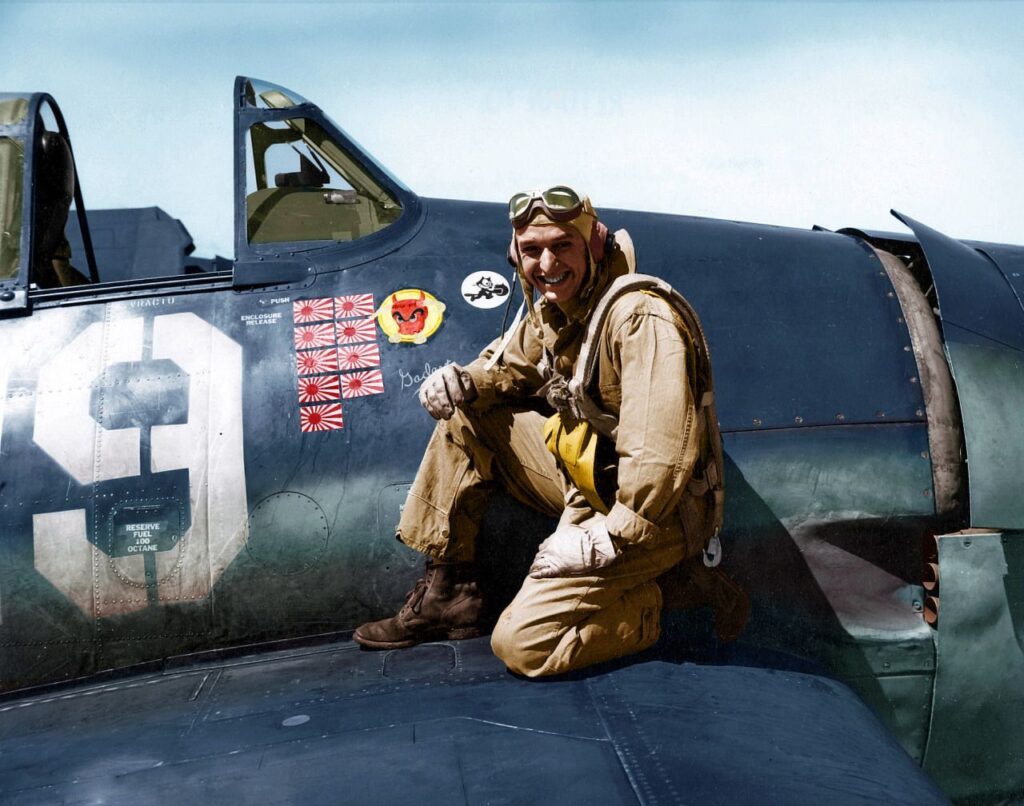

Our special thanks to Gerald Randy Anderson, Sr., Dan Ma and Chung De Ruan for their support in our WWII History impressions on American and Japanese pilots.
All photographs copyright by Rhonie Dela Cruz; except photos of Lt. Alex Vraciu from https://www.findagrave.com/memorial/142014739/alexander-vraciu and WO Ki-Ichi Nagano from Japanese Naval Ace Pilot and Fighter Units in WWII.


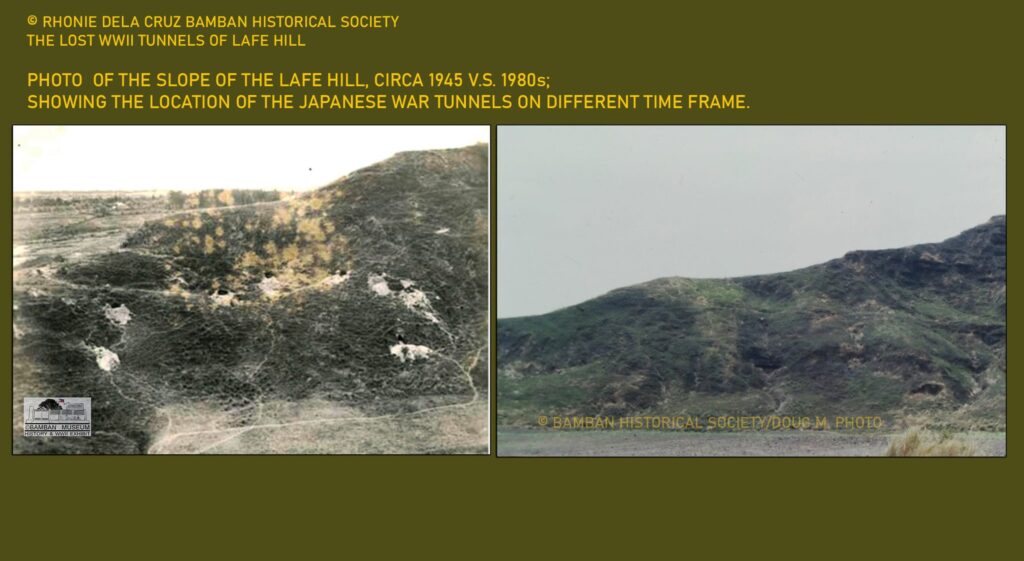

I wasnt aware that the planes left at midnight. Are there any other records of how long the flight to Leyte was and what their initial successes were?
Hi Mike!
The midnight on October 19 was the organization of the 1st Shimpu Tokubetsu Kogekitai in Mabalacat. The first successful mission was sortied on October 25. The flew from Mabalacat East AF around 7.25 a.m. and reached their target of American surface ships including carriers in Leyte Gulf around 10 a.m. and hit the carriers including USS Saint Lo around 10.30 a.m.